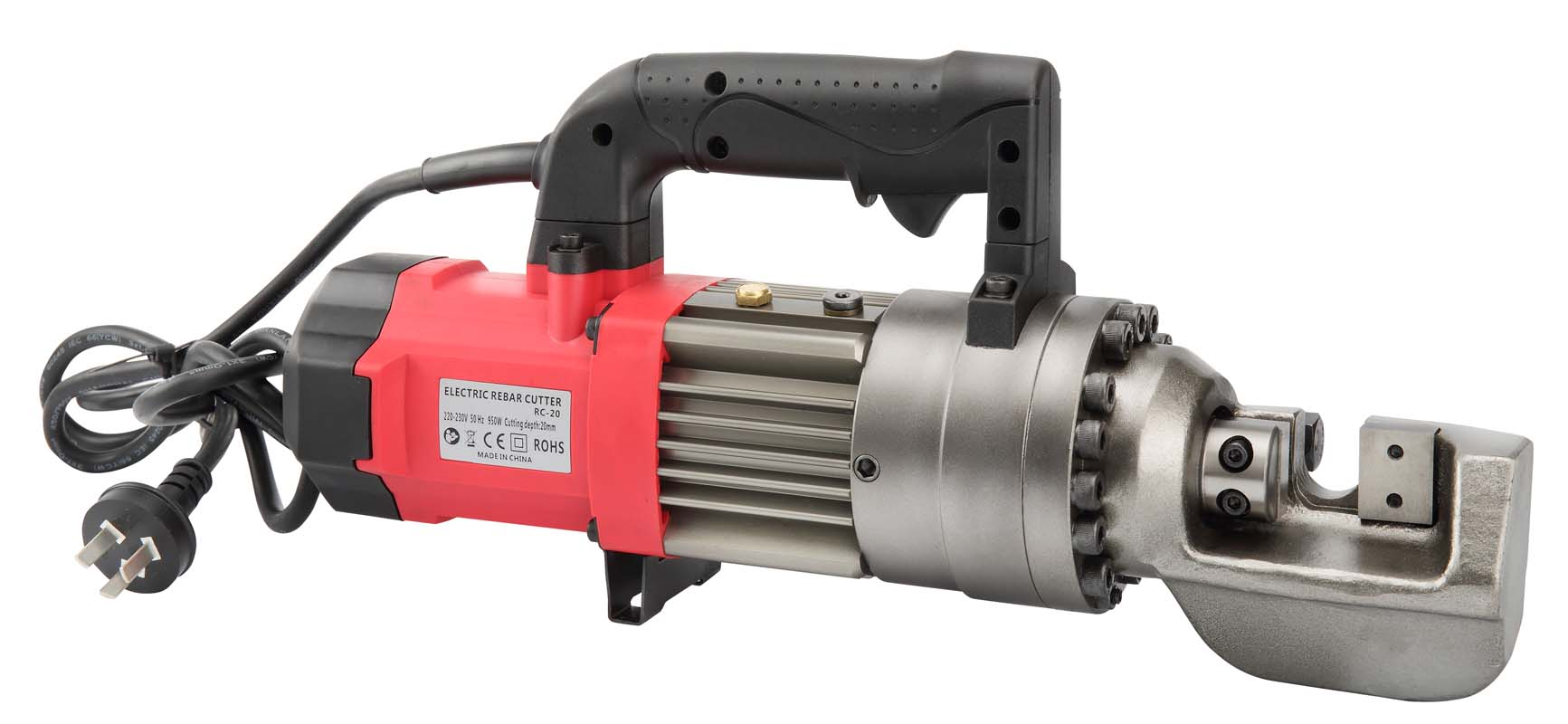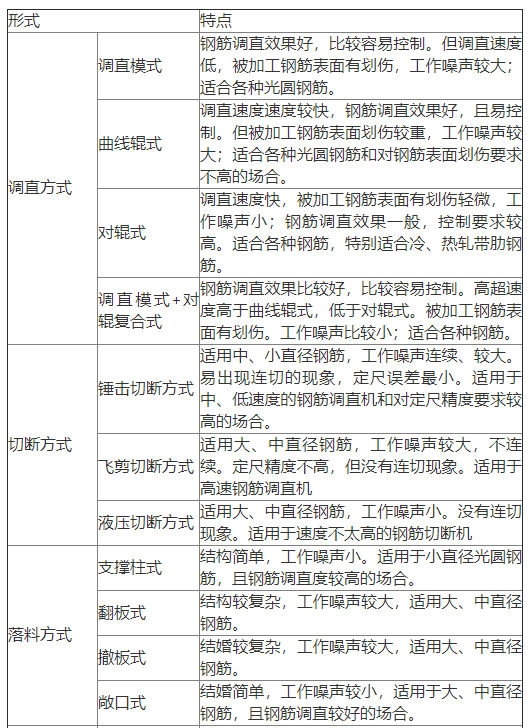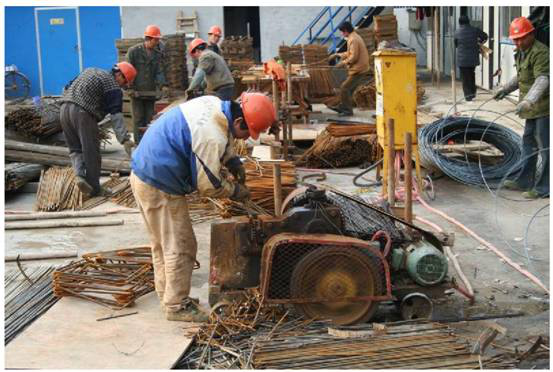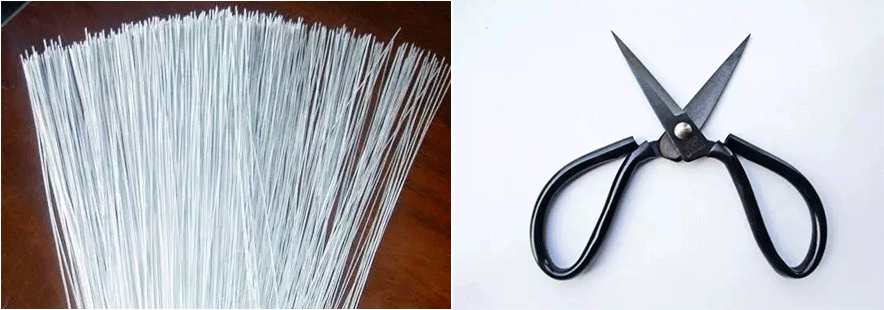(1) Cutting (cutting machine)
1. When cutting, the distance between the hand and the blade should not be less than 15cm. When moving the blade forward, feeding is prohibited.
2. Cutting steel bars, it is prohibited to exceed the load-bearing capacity of the mechanism. For steel bars with a diameter of more than 12mm, it is advisable to cut them individually. Special steel bars such as low alloy steel should be cut using high hardness blades.
3. When cutting long steel bars, a bracket should be provided and supported by someone. The action should be coordinated and consistent. When dragging or cutting short steel bars arbitrarily, a sleeve or pliers must be used to clamp the material, and direct hand support is not allowed. No one is allowed to stand within 2 meters in front of the cutting mouth.
4. During mechanical operation, it is strictly prohibited to directly clean the material heads and debris near the cutting edge by hand.
5. No one is allowed within the range of steel bar swing.
(2) Straightening (straightening machine)
1. The straightening machine is not allowed to stack objects.
2. It is forbidden to operate with gloves. The roller should be kept at a distance of more than 30cm. It is not allowed to adjust the roller during the mechanical operation.
3. When adjusting the steel bars until they are close to the end, no one is allowed within the range where the steel bars may shake.
4. Straightening steel bars shorter than 2m or with a diameter of 9mm or more should be done slowly.
(3) Rust removal (rust removal machine)
1. Rust removal should be carried out after basic straightening, and steel bars with hooks are strictly prohibited from being installed on the machine.
2. When operating, hold it flat and stand on the side of the wire brush, wear a mask, goggles, and gloves.
(4) Bending (bending machine)
1. The steel bars should be tightly attached to the baffle.
2. Bending of long steel bars should be accompanied by brackets or supported by someone, and stand on the outside of the direction of steel bar bending. Cooperators are not allowed to drag or pull the steel bars.
(5) Cold drawing (cold drawing machine)
1. When cold drawing, the operator must stand 2 meters away from both sides of the cold drawn steel bar, and it is prohibited to stay at both ends. Both ends should be equipped with retaining walls, and the tensioning trolley should also be equipped with baffles. The operator should stand at a diagonal angle of 45 ° behind the car, and the steel bar should be placed in the fixture mouth. After clamping the steel bar, the hand should be placed on the outer wall of the fixture and pressed down. After the steel bar is tightened, the hand can be released, and the hand should not be placed on the side or below the fixture.
2. The workers picking up materials should be cautious of steel bar heads injuring people when placing steel bars.
3. Mechanical operators must concentrate their thoughts, follow unified commands, and pay attention to reversing the vehicle. They should observe and monitor the sound of mechanical operation to ensure it is normal. If any abnormal situations are found, they should immediately stop the machine.
4. Before using a cold drawing winch, a protective baffle (or a mesh baffle can also be used) or a guide should be installed.
5. Cold work areas should be marked with warning zones and signs, prohibiting pedestrians from passing through.
(6) Cold drawing (cold drawing machine)
1. You should stand on the side of the roller to operate, and it is prohibited to directly contact the steel bars and roller with your hands.
2. When the end of the steel bar passes through the cold drawing mold, the clutch should be immediately disengaged and tools should be used to press the end of the steel bar.
(7) Spot welding and butt welding machines (including pier head machines)
1. Under any of the following circumstances, it is prohibited to start the machine:
① Poor rainproof measures at the homework site and damp ground;
② The welding machine has no reliable grounding (zero) device or poor wire insulation;
③ There are flammable and explosive materials in the work shed.
2. When operating, protective goggles, gloves, and insulated shoes should be worn, and standing on rubber boards or dry wooden boards. When welding steel bars, personnel on both sides should also wear insulated shoes.
3. If welding head leakage, cooling water pipe leakage or exceeding the specified temperature is found, the machine should be stopped immediately for processing.
(8) Binding
1. When handling steel bars, attention should be paid to the surrounding environment and no contact should be made with people, conductive materials, or other objects. When moving with multiple people, slogans should be shouted during lifting, landing, turning, and stopping, and coordination should be maintained. No one is allowed to stand below during lifting.
2. When tying the tendon, the tightly tied wire head should be bent inward, and the hook should be temporarily changed. The operator should not exert too much force.
3. When tying steel bars at heights, it is necessary to stand on the scaffold for operation, and it is not allowed to stand on the steel bars for operation or climb up and down the steel bars.
4. When binding steel bars for columns, beams, and walls, temporary supports should be used to support and secure them. If the column is within 4 meters and the weight is not large, it can be tied on the ground or floor, and erected as a whole. If the column reinforcement is above 4 meters, a workbench should be set up.
5. When binding the foundation steel bars, the steel bar brackets or horse stools should be arranged according to the construction design regulations, and the upper steel bars should be erected without arbitrarily reducing the brackets or horse stools.
6. Scaffolding and safety nets should be erected for the reinforcement of ring beams, eaves, exterior walls, and side columns of high-rise buildings, and safety belts should be hung during binding.
7. When lifting the steel reinforcement framework, no one is allowed to stand below. It is necessary to wait for the framework to descend within 1 meter from the ground before approaching, and only after it is in place and supported can the hook be removed.
8. When bending steel bars, they should be tightly attached to the baffle, pay attention to the position and rotation direction of the plug, do not open it incorrectly, and have a dedicated person support them. They should stand on the outside of the steel bar bending direction, cooperate with each other, and not drag.
Wenzhou Jietuo Electromechanical Co., Ltd. is an enterprise specializing in the production and export of portable hydraulic electric steel bar quick disconnectors, steel bar cutting machines, steel bar bending machines, shear pliers and other tools. Our national consultation hotline is 13819758083. With many years of production experience, we bring you the best steel bar processing machinery products and high-quality services, making you feel at ease when using them.
We sincerely welcome customers to visit our factory and have face-to-face communication. We look forward to cooperating with you!








